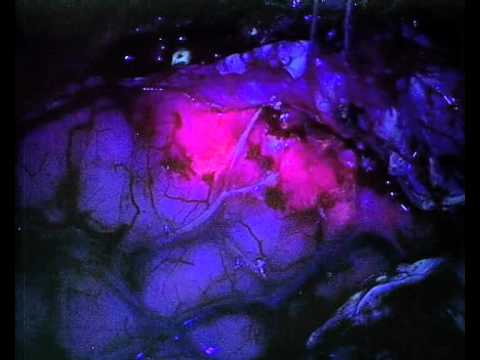ABRAXANE® Demonstrates Significant Improvement in Progression-Free Survival Compared to Standard Chemotherapy in Advanced Melanoma Patients
MELBOURNE, Australia – October 25, 2012 – Specialised Therapeutics Australia Pty Ltd today announced that abstracts for the upcoming Society for Melanoma Research meeting have been published online in the organization’s official journal at http://onlinelibrary.wiley.com/doi/10.1111/pcmr.12023/abstract.
The publication includes an abstract reviewing results from a phase III metastatic melanoma study with ABRAXANE® (nanoparticle albumin-bound paclitaxel).
In the randomised, open-label, international study (CA033), ABRAXANE showed a statistically significant improvement in progression-free survival (PFS) in chemotherapy-naïve patients with metastatic melanoma compared to patients receiving dacarbazine chemotherapy (4.8 vs. 2.5 months, respectively (HR:0.792; 95.1% CI: 0.631, 0.992; P=0.044).
An interim analysis of overall survival, the secondary endpoint, shows a trend in favour of the ABRAXANE arm compared to treatment with dacarbazine (12.8 and 10.7 months, respectively (HR:0.831; 99.9% CI: 0.578, 1.196; P=0.094).
Seventy Australian patients were involved in this trial of ABRAXANE comparing it with current standard chemotherapy agent dacarbazine.
“Metastatic melanoma presents significant treatment challenges due in part to limited therapies, low survival rates at diagnosis and no advances in chemotherapy in thirty-seven years,” said Dr. Evan M. Hersh, lead principal investigator and Professor of Medicine at the University of Arizona College of Medicine and Arizona Cancer Center, Tucson, AZ.
“Despite advances with targeted treatment and immunotherapies, there is still a need for new agents including chemotherapy treatments for the majority of patients with metastatic melanoma. The results from this investigational study of nab-paclitaxel not only demonstrated statistically significant and clinically meaningful improvement in progression-free survival, but a positive trend in overall survival.”
Australian investigator and director of the Westmead Institute for Cancer Research Professor Richard Kefford said this is the first time a chemotherapy has shown an improvement in outcomes against the current chemotherapy standard of care. “This study result is very encouraging, particularly viewed against a background of dismal treatment outcomes,” he said.
“Even incremental steps forward against this disease bring great hope to our patients and their carers, and represent foundations on which we can build even better therapies “
He said ABRAXANE could now be regarded as one in a class of several new agents which are transforming the way the disease will be managed, and which are demonstrating improved outcomes for patients with metastatic disease.
Professor Kefford said in Australia, an estimated 5% of patients with melanoma developed metastatic disease and these people typically had a poor prognosis as the disease did not respond well to standard therapies.
STA chief executive officer Mr. Carlo Montagner said the positive data paved the way for Australian melanoma patients with metastatic melanoma disease to access more effective treatment options.
“Very few treatment options exist for this group of patients,” Mr. Montagner said. “We are extremely pleased to demonstrate that ABRAXANE is capable of prolonging survival times for patients with metastatic melanoma and we hope to have ABRAXANE approved by the Therapeutic Goods Administration in Australia by 2014.”
The safety profile of ABRAXANE observed in the CA033 study is comparable with other ABRAXANE pivotal clinical trials. The most common grade ≥3 treatment-related adverse events reported in ≥10% patients were neuropathy (ABRAXANE: 25% vs. dacarbazine: 0%), neutropenia (ABRAXANE: 20% vs. dacarbazine: 10%). The median time to neuropathy improvement with ABRAXANE was 28 days.
These results are from an investigational study. ABRAXANE is not approved for the treatment of metastatic melanoma. Following TGA review and approval, STA will seek to have Abraxane included on the Pharmaceutical Benefits Scheme (PBS) for reimbursement of ABRAXANE for chemotherapy-naïve patients with metastatic melanoma.
About the Study
CA033 is a phase III randomised, open-label, international study that evaluated the safety and efficacy of ABRAXANE versus standard chemotherapy, dacarbazine in chemotherapy-naïve patients with stage IV metastatic melanoma. The majority of the patients were males (66%), had an ECOG status of 0 (71%), and had very advanced metastatic disease (M1c stage: 65%). Dacarbazine is the only chemotherapy approved since 1975 by the U.S. Food and Drug Administration for metastatic melanoma.
In the CA033 study, 529 chemotherapy-naïve patients were randomized to receive either ABRAXANE (150mg/m2 weekly for 3 out of 4 weeks) (n=264) or standard chemotherapy, dacarbazine (1000 mg/m2 every three weeks) (n=265). The primary endpoint was progression-free survival (PFS) based on blinded assessment of CT scans obtained every 8 weeks, evaluated per RECIST. The secondary endpoint was OS and other endpoints included objective response rate (ORR), disease control rate (DCR), and safety/tolerability.
About ABRAXANE®
ABRAXANE is a solvent-free, nanoparticle chemotherapy treatment option for metastatic breast cancer.1 In Australia, ABRAXANE is currently listed on the PBS for the treatment of metastatic breast cancer and HER2 positive breast cancer in combination with trastuzumab.
ABRAXANE is approved for metastatic breast cancer in over 40 countries including the U.S., Canada, European Union, Japan and China, and more than 500,000 cancer patients have received ABRAXANE therapy in the past five years.
In Australia, ABRAXANE has also been granted orphan drug designation by the Therapeutic Goods Administration for the treatment of pancreatic cancer. Orphan drug status is granted to drugs used to treat relatively rare diseases such as pancreatic cancer and may allow for priority evaluation by the TGA.
In addition to the melanoma trial, ABRAXANE is currently under phase III investigation for the treatment of metastatic pancreatic cancer and has been filed for approval in Non-Small Cell Lung Cancer (NSCLC) with the TGA earlier this year.
Developed using the proprietary nab(TM) technology platform, ABRAXANE is a nanoparticle protein-bound chemotherapy agent. ABRAXANE combines paclitaxel with albumin, a naturally-occurring human protein, to deliver the drug and eliminates the need for solvents in the administration process. Nanoparticle technology allows ABRAXANE to deliver a 49% higher dose compared to regular solvent-based paclitaxel without compromising safety and tolerability.1-2
In a randomised phase III study of metastatic breast cancer patients, ABRAXANE demonstrated nearly double the overall tumour response rate compared to solvent-based paclitaxel. 1-2
Anthracycline pre-treated patients in the study lived significantly longer.3 The tolerability with ABRAXANE and solvent-based paclitaxel was comparable, despite the 49% greater dose of paclitaxel administered as ABRAXANE.1-2 Neutropenia was lower with ABRAXANE compared to solvent-based paclitaxel, although there was an increase in incidence of grade 3 peripheral neuropathy with ABRAXANE. However the median time to improvement, from grade 3 peripheral neuropathy to grade 2 or lower, was 22 days. No adverse events were reported that were not already known for paclitaxel.1-2
Contraindications and side effects1:
Like all medications, ABRAXANE may cause side effects.
ABRAXANE should not be used in patients who have baseline neutrophil counts of <1.5 x 109 /L.
In patients who have exhibited hypersensitivity reactions to paclitaxel or albumin, patients should not be treated with ABRAXANE.
ABRAXANE is contraindicated during pregnancy and lactation.
Most common side effects (≥1/10) caused by ABRAXANE include; neutropenia, anemia, leucopenia, thrombocytopenia, lymphophenia, anorexia, peripheral neuropathy, hypoaesthesia, paraethesia, nausea, diarrhoea, vomiting, constipation, stomatitis, alopecia, rash, arthralgia, myalgia, fatigue, asthenia, pyrexia.
For further information regarding ABRAXANE and potential side effects, physicians should review the ABRAXANE Product Information and patients should consult their oncologist or the ABRAXANE Consumer Medicine Information available on www.specialisedtherapeutics.com.au.
ABRAXANE® is a registered trademark of Celgene Corporation.
ABRAXANE® is distributed by STA under license from Celgene Corporation in Australia and New Zealand.
About Specialised Therapeutics Australia, Pty Ltd
Specialised Therapeutics Australia Pty Ltd (STA) is a biopharmaceutical company dedicated to working with leading pharmaceutical companies worldwide to provide acute care therapies for high unmet medical needs to people living in Australia and New Zealand.
Currently STA markets two world leading cancer and cancer supportive care therapies, ABRAXANE® (nab paclitaxel) and ALOXI® (palonosetron) respectively, and has recently licensed two new agents from the Helsinn Group. Firstly Anamorelin, which is a novel ghrelin receptor agonist for the treatment of anorexia-cachexia in NSCLC, and a fixed-dose combination product (in both oral and intravenous forms) containing netupitant, a neurokinin-1 (NK1) receptor antagonist, combined with Aloxi, a serotonin-3 (5-HT3) receptor antagonist. STA also has interests in the therapeutic areas of respiratory, dermatology, endocrinology and central nervous system (CNS). Additional information can be found at www.specialisedtherapeutics.com.au
References:
1. Abraxane Product Information
2. Gradishar WJ et al. J Clinical Oncology 2005;23:7794-7803
3. Vukelja SJ et al. ASCO 2008, Abstract 1082
Media Inquiries:
Emma Power
Monsoon Communications
Level 12 15 William Street
Melbourne VIC 3000
Ph: +613 9620 3333
www.monsoon.com.au



